
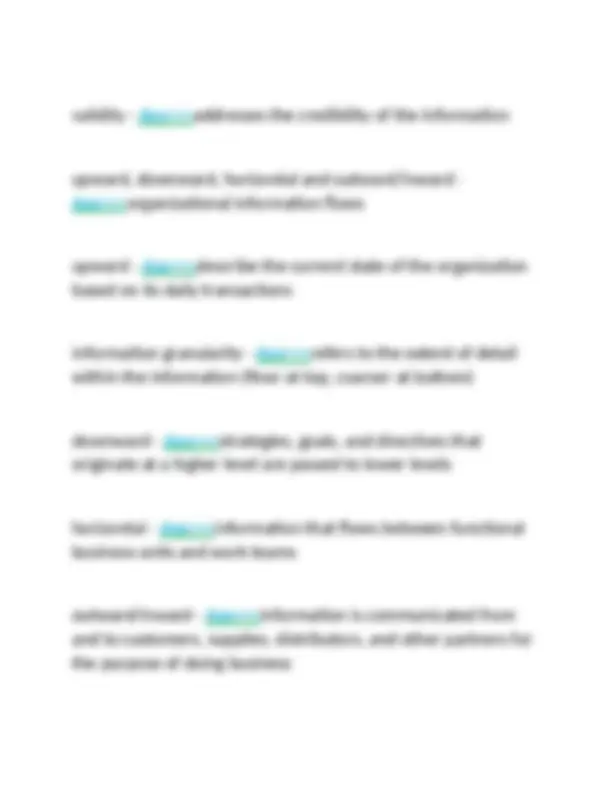
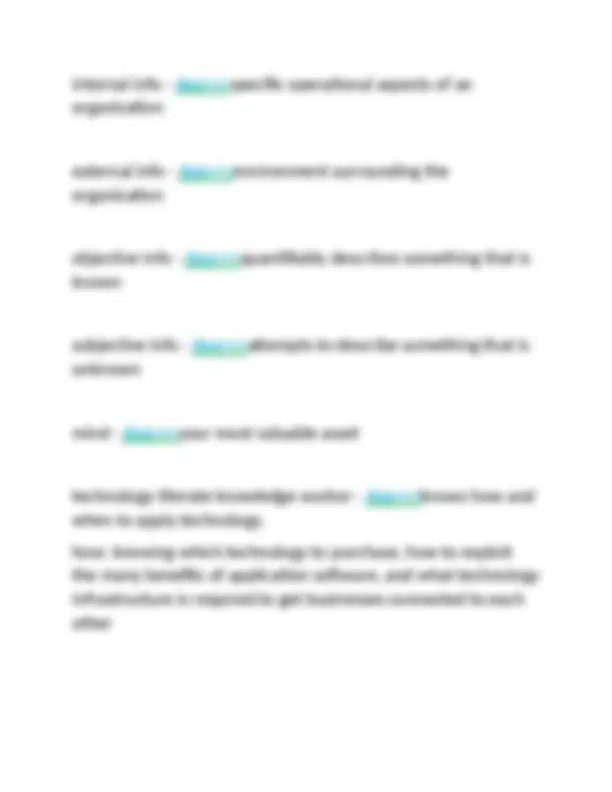
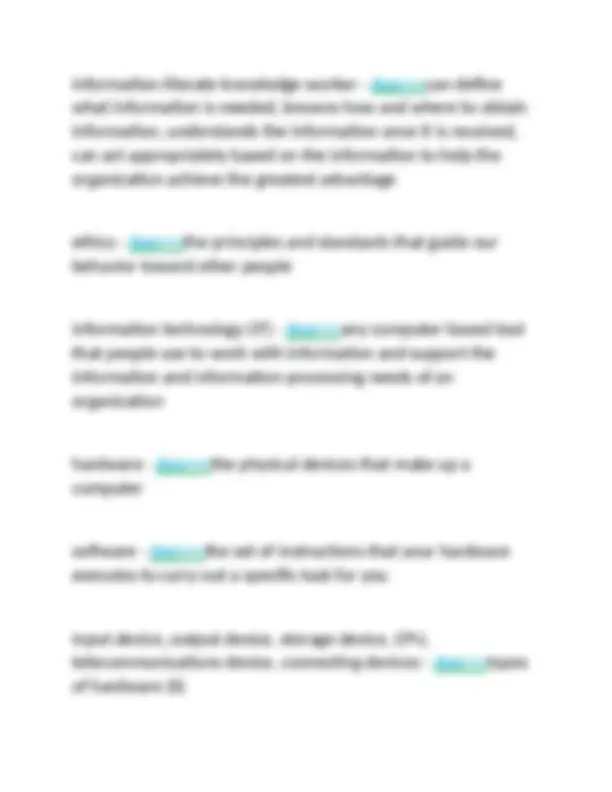
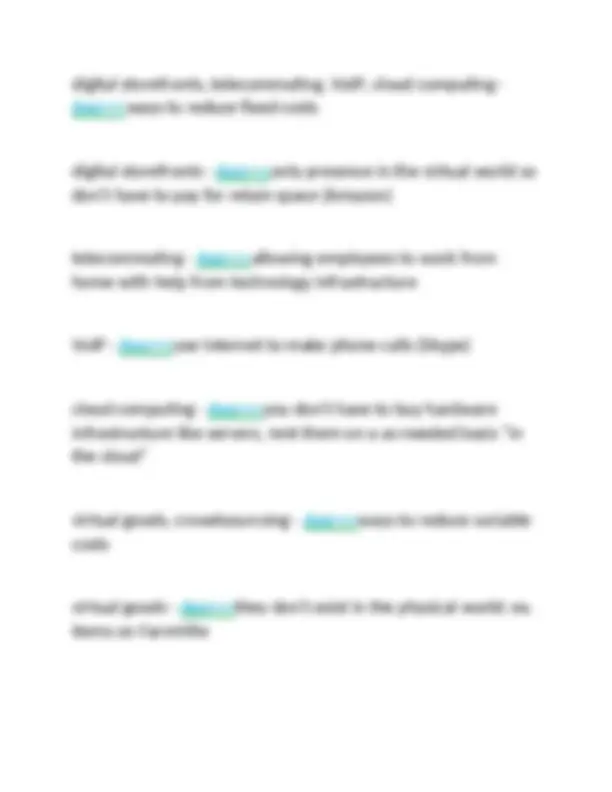
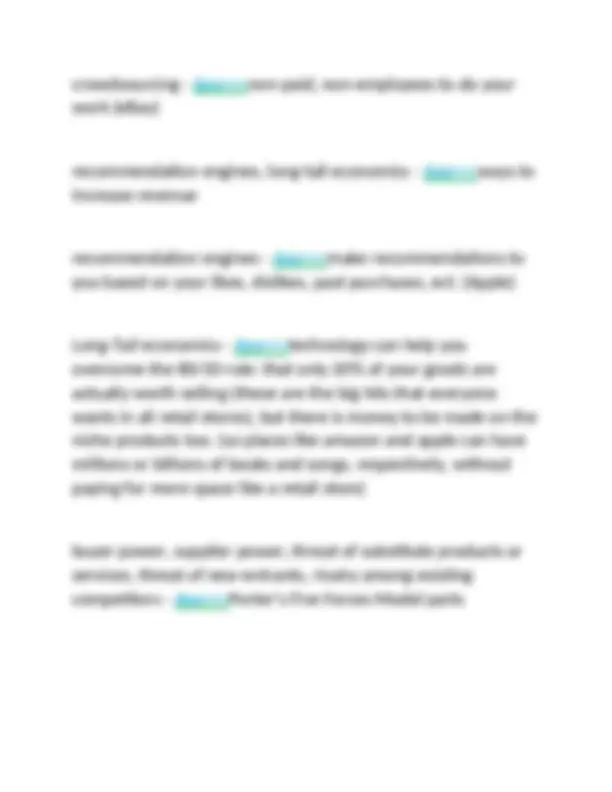
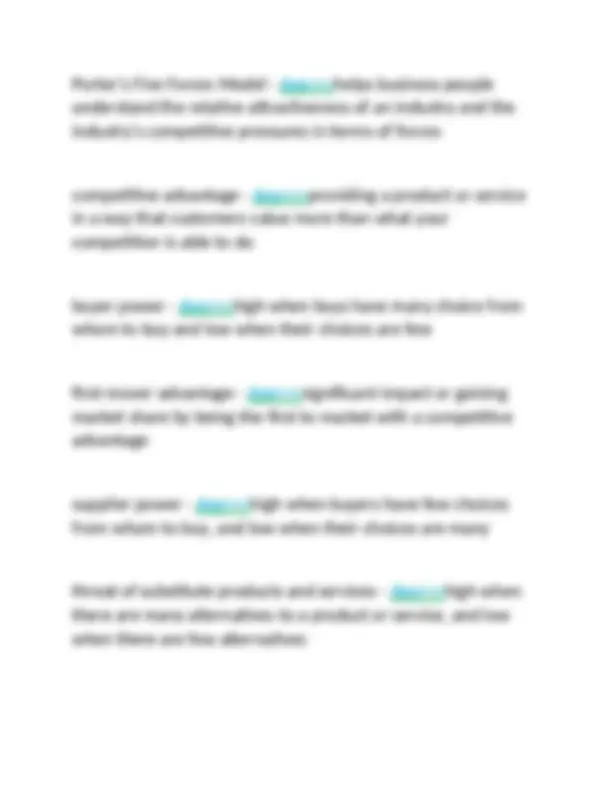
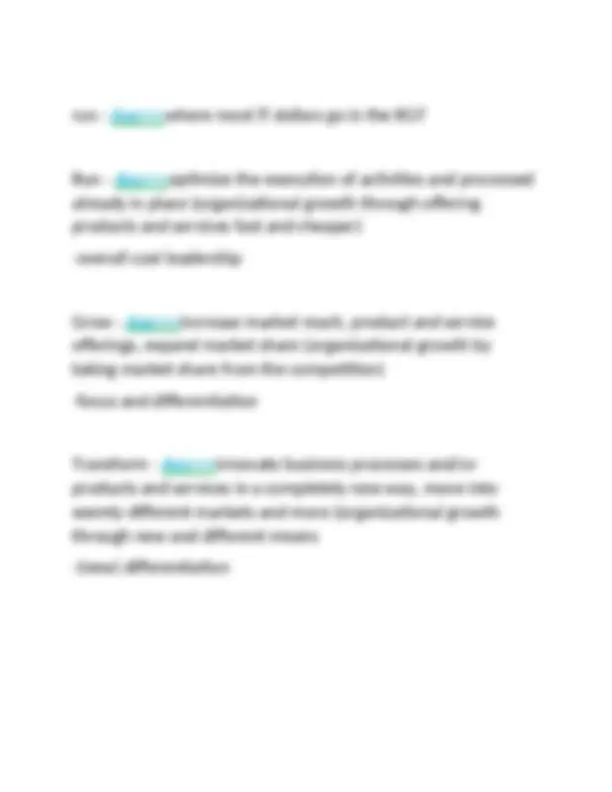


Study with the several resources on Docsity

Earn points by helping other students or get them with a premium plan


Prepare for your exams
Study with the several resources on Docsity

Earn points to download
Earn points by helping other students or get them with a premium plan
Community
Ask the community for help and clear up your study doubts
Discover the best universities in your country according to Docsity users
Free resources
Download our free guides on studying techniques, anxiety management strategies, and thesis advice from Docsity tutors
Business Information Systems Chapter 1 Questions and Verified Rationalized Answers, 100% Guarantee Pass
Typology: Exams
1 / 13

This page cannot be seen from the preview
Don't miss anything!








Management Information Systems (MIS) - Ans>>> deals with the planning for, development, management and use of information technology tools to help people perform all tasks related to information processing and management information, technology, people - Ans>>> MIS's three most important resources people - Ans>>> MIS's most important resource data, info, business intelligence - Ans>>> Key parts of mis resource information Data - Ans>>> raw facts that describe a particular phenomenon such as the current temperature Information - Ans>>> is data that have a particular meaning within a specific context
Business Intelligence (BI) - Ans>>> collective information-about your customers, your competitors, your business partners, your competitive environment, and your own internal operations- that gives you the ability to make effective, important, and often strategic decisions Timeliness, location, form, validity - Ans>>> Factors that affect information quality timeliness - Ans>>> 1. Do you have access to information when you need it? 2. Does the information describe the time period or periods you're considering? location - Ans>>> information is of no value to you if you can't access it form - Ans>>> 1. audio, text, video, animation, graphical, etc? whichever is most useful and 2. is the information free of errors GIGO (garbage-in garbage-out) - Ans>>> if the information coming into your decision-making process is in bad form, you''ll more than likely make a poor decision
internal info - Ans>>> specific operational aspects of an organization external info - Ans>>> environment surrounding the organization objective info - Ans>>> quantifiably describes something that is known subjective info - Ans>>> attempts to describe something that is unknown mind - Ans>>> your most valuable asset technology-literate knowledge worker - Ans>>> knows how and when to apply technology. how: knowing which technology to purchase, how to exploit the many benefits of application software, and what technology infrastructure is required to get businesses connected to each other
information-literate knowledge worker - Ans>>> can define what information is needed, knowns how and where to obtain information, understands the information once it is received, can act appropriately based on the information to help the organization achieve the greatest advantage ethics - Ans>>> the principles and standards that guide our behavior toward other people information technology (IT) - Ans>>> any computer-based tool that people use to work with information and support the information and information-processing needs of an organization hardware - Ans>>> the physical devices that make up a computer software - Ans>>> the set of instructions that your hardware executes to carry out a specific task for you input device, output device, storage device, CPU, telecommunications device, connecting devices - Ans>>> types of hardware (6)
connecting devices - Ans>>> something like a USB port into which you would connect a printer, etc application and system - Ans>>> types of software application software - Ans>>> enables you to solve specific problems and perform specific tasks (Microsoft Word) system software - Ans>>> handles tasks specific to technology management and coordinates the interaction of all technology devices fixed cost - Ans>>> total of all costs that you incur whether or not you sell anything (rent for office space, utilities, insurance, employee salaries) variable cost - Ans>>> amount it costs to acquire/produce one unit that you will eventually sell to your customers revenue - Ans>>> how much you sell that one unit for
digital storefronts, telecommuting, VoIP, cloud computing - Ans>>> ways to reduce fixed costs digital storefronts - Ans>>> only presence in the virtual world so don't have to pay for retain space (Amazon) telecommuting - Ans>>> allowing employees to work from home with help from technology infrastructure VoIP - Ans>>> use Internet to make phone calls (Skype) cloud computing - Ans>>> you don't have to buy hardware infrastructure like servers, rent them on a as-needed basis "in the cloud" virtual goods, crowdsourcsing - Ans>>> ways to reduce variable costs virtual goods - Ans>>> they don't exist in the physical world; ex. items on FarmVille
Porter's Five Forces Model - Ans>>> helps business people understand the relative attractiveness of an industry and the industry's competitive pressures in terms of forces competitive advantage - Ans>>> providing a product or service in a way that customers value more than what your competition is able to do buyer power - Ans>>> high when buys have many choice from whom to buy and low when their choices are few first-mover advantage - Ans>>> significant impact or gaining market share by being the first to market with a competitive advantage supplier power - Ans>>> high when buyers have few choices from whom to buy, and low when their choices are many threat of substitute products and services - Ans>>> high when there are many alternatives to a product or service, and low when there are few alternatives
switching costs - Ans>>> costs that make customers reluctant to switch to another product or service supplier ; this can be real money or no real money, for example switching from amazon that creates you a profile is no money and switching phone providers that make you pay is money threat of new entrants - Ans>>> high when it is easy for new competitors to enter the market, and low when there are significant entry barrios to entering a market entry barrier - Ans>>> product or service feature that customers have come to expect from organizations in a particular industry and that must be offered by an entering organization to compete and survive rivalry among existing competitors - Ans>>> high when competition is fierce in a market, and low when competition is complacent ; usually all industries are very competitive, besides maybe a grave digger or burial services
run - Ans>>> where most IT dollars go in the RGT Run - Ans>>> optimize the execution of activities and processed already in place (organizational growth through offering products and services fast and cheaper) -overall cost leadership Grow - Ans>>> increase market reach, product and service offerings, expand market share (organizational growth by taking market share from the competition) -focus and differentiation Transform - Ans>>> innovate business processes and/or products and services in a completely new way, move into seemly different markets and more (organizational growth through new and different means -(new) differentiation